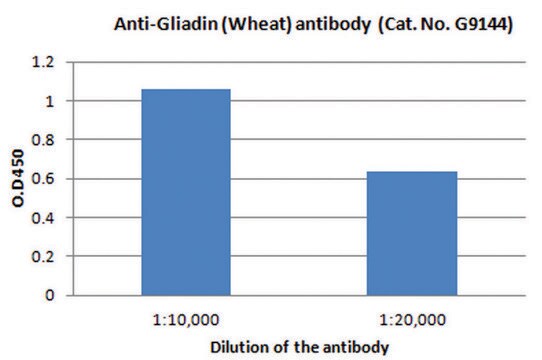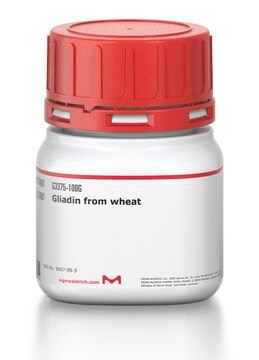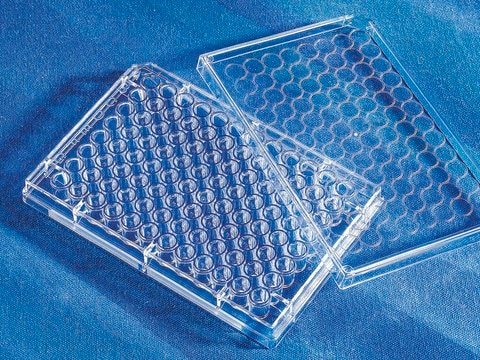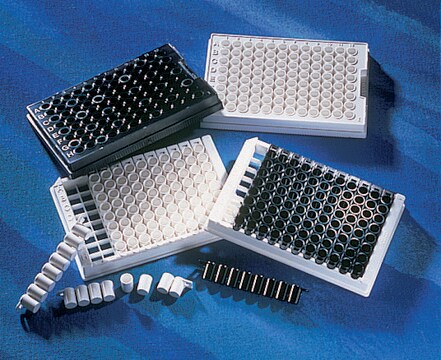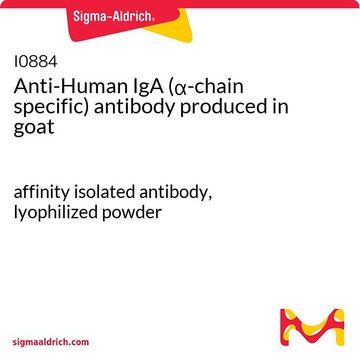Wichtige Dokumente
SAB4200864
Anti-Gliadin antibody, Mouse monoclonal
clone GLD7, purified from hybridoma cell culture
Synonym(e):
Prolamin, alpha-gliadin
About This Item
Empfohlene Produkte
Antikörperform
purified from hybridoma cell culture
Qualitätsniveau
Klon
GLD7
Speziesreaktivität
plant
Konzentration
~1 mg/mL
Methode(n)
ELISA: 0.12-0.06 μg/mL using wheat gliadin (Sigma #G3375)
immunoblotting: 1-2 μg/mL using wheat gliadin (Sigma #G3375)
Isotyp
IgG1
UniProt-Hinterlegungsnummer
Versandbedingung
dry ice
Lagertemp.
−20°C
Posttranslationale Modifikation Target
unmodified
Allgemeine Beschreibung
As plant proteins, they are recognized as prion-free 2.Gliadin can adhere to the mucus layer of the stomach due to its mucoadhesive property, which is a result of various interactions (e.g., hydrogen bonding, van der Waals force, and mechanical penetration).
Spezifität
Anwendung
Biochem./physiol. Wirkung
The tissue transglutaminase-catalyzed changes in gliadin are not restricted to single gliadin types, for example, prolamines in barley and rye (known as hordelin and secalin, respectively) and these may induce a messenger RNA-mediated interferon-gamma response in the small-intestinal mucosa of celiacs. An alpha-2-gliadin-33-mer appears to pass through the enterocyte brush border membrane by a dose-dependent translocation mechanism, and this is further enhanced by interferon-gamma, possibly mediated by a delayed epidermal growth factor endocytosis. In active celiac disease, this immune-mediated response is very complex and involves many different mediators (such as Interlukin-21 from activated CD4+ Tcells) some are still being studied.
With genetic susceptibility, gliadin may interact with interenterocyte tight junctions and cause their disassembly. Moreover, Gliadin peptides may bind to the chemokine receptor, CXCR3. This induces zonulin release from the tight junction region and causes a resultant increase in intestinal permeability. Permeability increases have also been demonstrated prior to the onset of clinically apparent celiac disease, and even with a gluten-free diet, this altered tight junction permeability may not completely return to normal3.Anti Gliadin antibody may serve as an important tool in Celiac disease research field.
Physikalische Form
Lagerung und Haltbarkeit
Haftungsausschluss
Lagerklassenschlüssel
12 - Non Combustible Liquids
WGK
nwg
Flammpunkt (°F)
Not applicable
Flammpunkt (°C)
Not applicable
Hier finden Sie alle aktuellen Versionen:
Analysenzertifikate (COA)
It looks like we've run into a problem, but you can still download Certificates of Analysis from our Dokumente section.
Wenn Sie Hilfe benötigen, wenden Sie sich bitte an Kundensupport
Besitzen Sie dieses Produkt bereits?
In der Dokumentenbibliothek finden Sie die Dokumentation zu den Produkten, die Sie kürzlich erworben haben.
Global Trade Item Number
| SKU | GTIN |
|---|---|
| SAB4200864-100UL | |
| SAB4200864-25UL |
Unser Team von Wissenschaftlern verfügt über Erfahrung in allen Forschungsbereichen einschließlich Life Science, Materialwissenschaften, chemischer Synthese, Chromatographie, Analytik und vielen mehr..
Setzen Sie sich mit dem technischen Dienst in Verbindung.